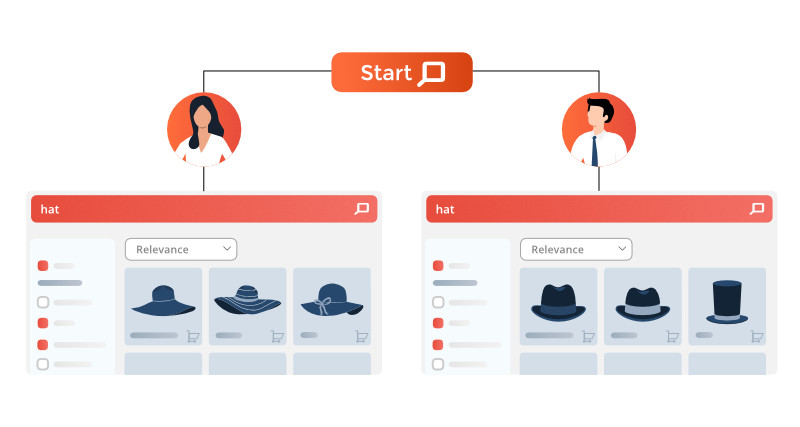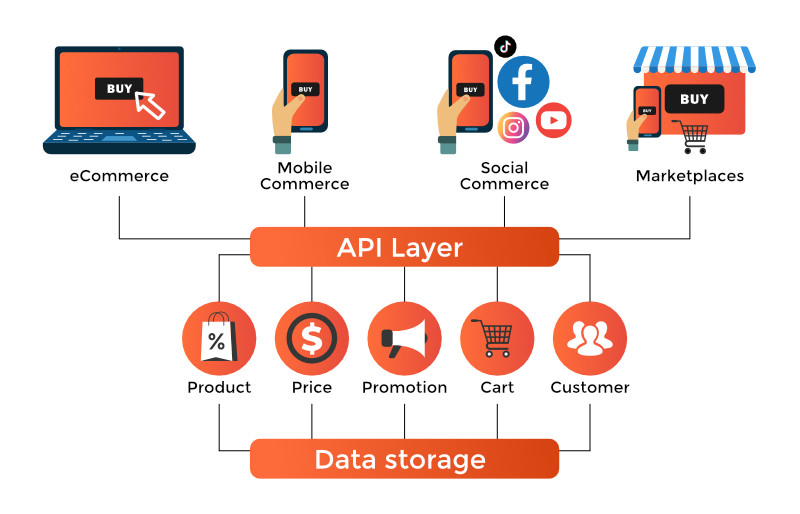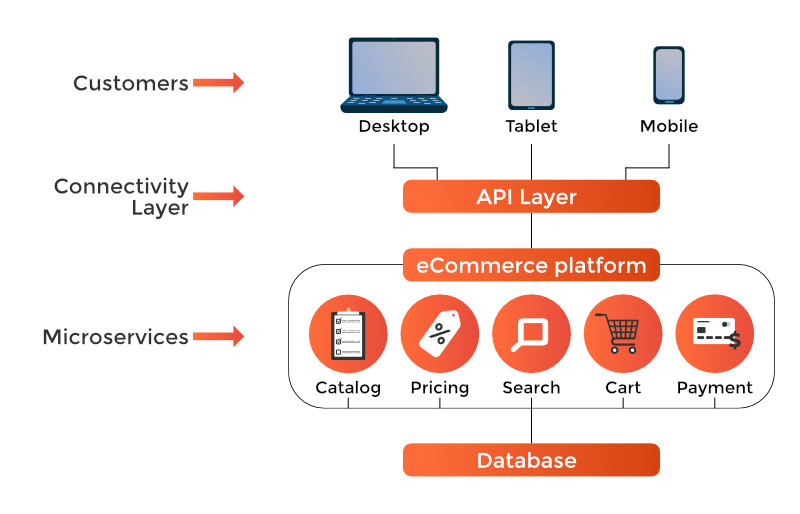How Data Integration Can Aid In Hyper-Personalized Ecommerce Site Search
In 2020 having a hyper-personalized site search is key for any eCommerce business. On its most basic level hyper personalization is defined by Business2Community as “the use of data to provide a more personalized and targeted products, services and content.”
In today’s fast-paced and increasingly competitive eCommerce industry, having a strong targeted personalized site search will allow you to reach your customer base quickly and show them exactly what they are looking for.

But that just isn’t enough in today’s world, Merchants who are truly successful in the space are using data gained through personalization and using data integration to automate their applications together in a future-proof headless environment.
Let’s take a deeper dive into what types of hyper-personalization are available and how data integration in a headless environment can level up your eCommerce performance and compete with the best.
What is Hyper-Personalized Ecommerce Search?
With all ecommerce efforts, whether that be improving website design, personalization of eCommerce site search and even data integration of applications – the goal is to make business processes easier and efficient for Merchants and improve the overall customer experience. Some examples of website personalization that can help focus your customer experience journey can include increasing metrics like average order value, bounce rate, conversion rates, customer retention rates and overall profitability.

Shoppers increasingly expect merchants to deliver contextually-relevant experiences that take into account their past interactions with the brand. Every interaction a customer has with your brand is a data point that can be used to improve their customer experience. 74% of customers feel frustrated when website content is not personalized. Customers expect to be made to feel special and have thoughtful interactions with Brands.
Given that statistic, it’s clear that adding in site personalization applications like Nosto or Klaviyo to your eCommerce application mix will allow you to adapt product recommendations to every individual customer behavior level and create unique customer experiences for every customer and increase conversion rates, average order value etc.
How To Future Proof: Hyper-Personalization and Headless Commerce
There has been continuous focus on Headless Commerce this past year. Touted as the next stage in e-commerce, Headless Commerce is in essentials; API-driven. The main function is to remove the content management layer from the front-end of a website and it’s checkout. The content management system thus becomes hyper-personalized.

Having a headless system allows you to individualize every aspect of the content and products on the front-end of the site. This includes focused site search that can remind a previous customer of a past purchase, showing customers detailed relevant products similar to their past purchases as well as improving average cart value with individualized add-on products options.
Benefits of A Strategy Driven Hyper-Personalized Site
These are just a few simple examples of what is possible with a well rounded, strategy driven hyper-personalized site focused on customer experience. Remember,
People don’t buy objects, they buy experiences. Especially now because no one is shopping in-store anymore. Personalizing the experience, being everywhere your customer shops online from marketplaces, to your Shopify store is now more important than ever.
Merchants that are winning at the game of eCommerce are future-proofing their businesses by implementing headless technology that allows them to have a hyper-connected customer through implementing individualized customer experience across their e-commerce shopping journey.
Headless Commerce: The Future of Commerce
VL OMNI has written extensively on Headless in their latest Guide: Headless Commerce: The Complete Integration Guide This integration-first ebook looks at what it will take to make headless commerce a reality for many. From different ways to approach headless commerce, to major issues and implications a headless future will have on the ecommerce and commerce industries, readers will come away with a true technical understanding of what it takes to become headless.
Data Integration: Agile and Scalable Automation
So, with a hyper-personalized website and marketing processes, combined with headless technology that allows you to efficiently and effectively individualize products, orders and the overall customer experience for each customer. How on earth do you tie it all together?
Data integration and automation between applications is the easiest and most effective process for businesses at scale to eliminate costly and time consuming manual data entry and manual business processes.
But what is Data Integration and why is it important?
Data integration connects disparate applications together, allowing for consistent automated movement and delivery of data to create business processes across a wide range of applications.
Data integration plays an important role in the world of eCommerce because it provides users with a real-time outlook of business performance and transforms data into valuable, usable information by combining it from different sources.
As commerce in the physical world and online continues to evolve, your understanding of data integration can help inform your business’ ability to scale and build a more robust future for itself.
Data integration between different applications can be created in an agile and scalable manner, allowing you to automate hyper-personalized processes and individualized products at scale.

This allows you to focus on what’s most important to Merchants: creating a great customer experience. Data automation’s real value is connecting disparate systems together to eliminate manual processes.
In a hyper-personalized headless environment that can mean integrating your eCommerce store with your CRM, ERP, loyalty or personalization program.
This allows all the order and customer data collected from your eCommerce store, for example Shopify to be integrated into your CRM, allowing you to keep track of customers personal information and ordering habits.
This information can then be integrated into the content layer of a website in a headless environment to get specific personalized information and individualized offers to each and every valuable customer.
Hyper-Personalization in Site Search: The Role of Data Integration
Those who are succeeding in the ecommerce industry today are those who look at every aspect of their business, including their applications and business processes and look at how they can leverage all of their data into providing a better personalized experience for their customers.
Creating a hyper-personalized experience starts with the back-end data. The way that data is used and leveraged into providing valuable insights for your business will inform how successful your personalization targets perform.
By automating processes and integrating all applications together, your business can create a full picture of each customer, their habits and their shopping persona, allowing you to make educated decisions about how to personalize your website and site search for them. Ecommerce growth is truly open to those Merchants that take their data into their own hands and with it, create the best personalized shopping experience possible.


